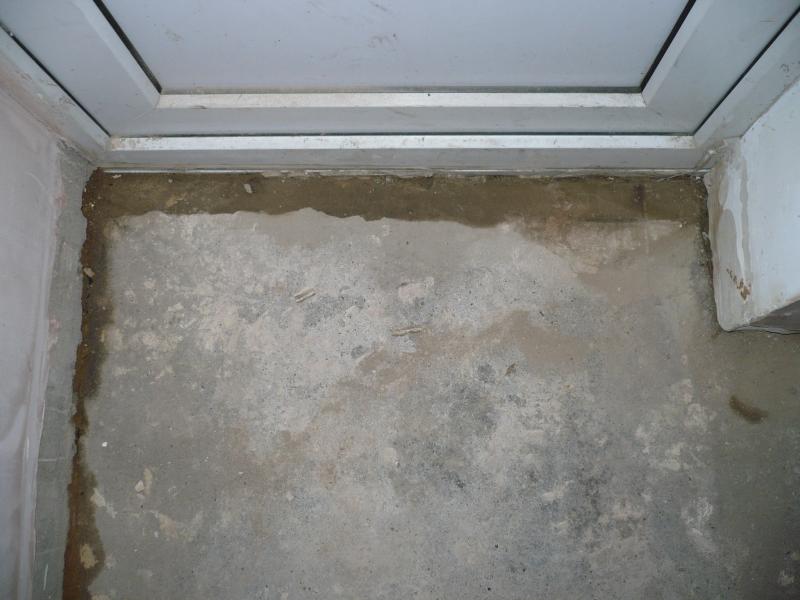Hi All,
I am redoing my kitchen - just pulled up the old laminate floor and found this underneath.
The main concrete slab is dry but it looks like the previous owner put down ~10mm mortar on top of earth when he redid the back door and did noting to stop moisture wicking though into the floor.
I dont have any real idea what the best way is to get this dry. I appreciate any ideas/suggestions/tips.
The best I can think of is to chisel the area out to the depth of the original slab, prime the join with waterproof PVA and infill concrete with a waterproofer (
just got this no nonsence pink admixture. I am worried this may not be enough in terms of priming the join or if I would need a DPC too?
As it is just a small area I was wondering if there was some kind of impermeable product I could use rather than concrete.
My plan was to level the floor with Wickes fibre reinforced latex levelling compound before tiling the floor.
Now I have searched the forum I see that latex based stuff may be weak - I don't know if this would be a problem under tiles and if I should go for something like f ball stopgap 100. I live literally next to a Wickes which sways m buying choices a lot
The whole kitchen is 2m x 4.3m and difference between high and low point is about 10mm.
I am redoing my kitchen - just pulled up the old laminate floor and found this underneath.
The main concrete slab is dry but it looks like the previous owner put down ~10mm mortar on top of earth when he redid the back door and did noting to stop moisture wicking though into the floor.
I dont have any real idea what the best way is to get this dry. I appreciate any ideas/suggestions/tips.
The best I can think of is to chisel the area out to the depth of the original slab, prime the join with waterproof PVA and infill concrete with a waterproofer (
just got this no nonsence pink admixture. I am worried this may not be enough in terms of priming the join or if I would need a DPC too?
As it is just a small area I was wondering if there was some kind of impermeable product I could use rather than concrete.
My plan was to level the floor with Wickes fibre reinforced latex levelling compound before tiling the floor.
Now I have searched the forum I see that latex based stuff may be weak - I don't know if this would be a problem under tiles and if I should go for something like f ball stopgap 100. I live literally next to a Wickes which sways m buying choices a lot
The whole kitchen is 2m x 4.3m and difference between high and low point is about 10mm.



